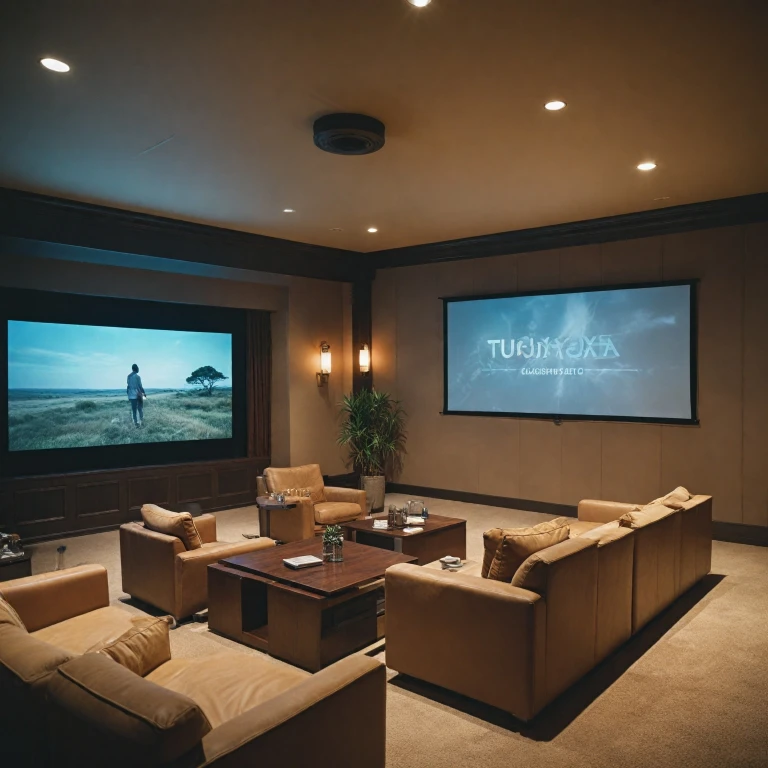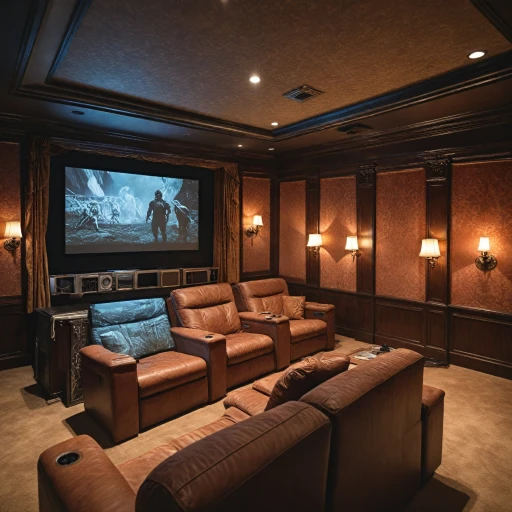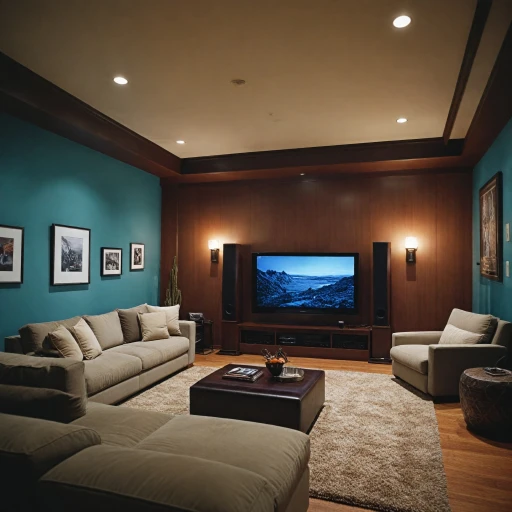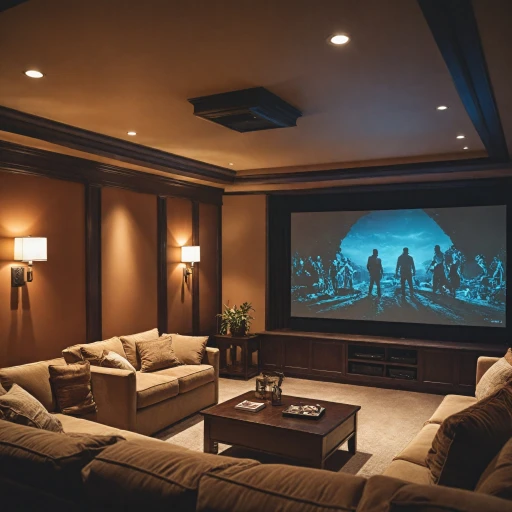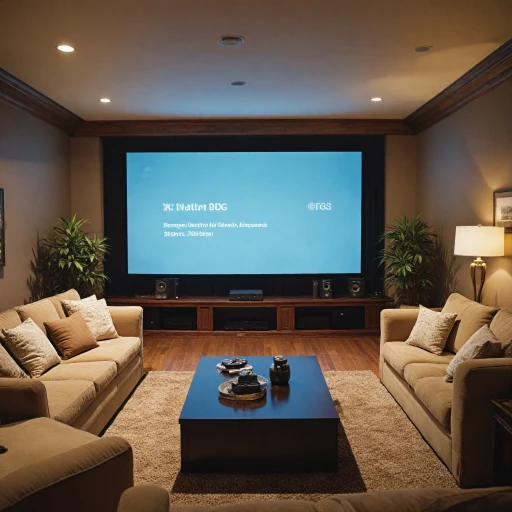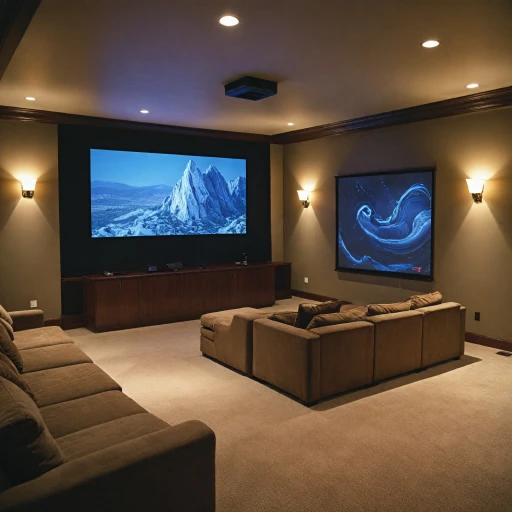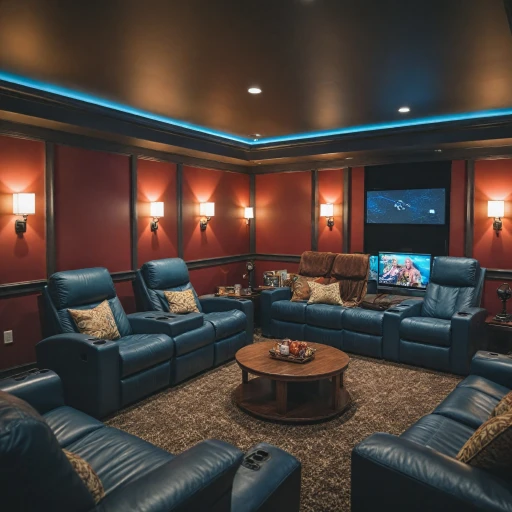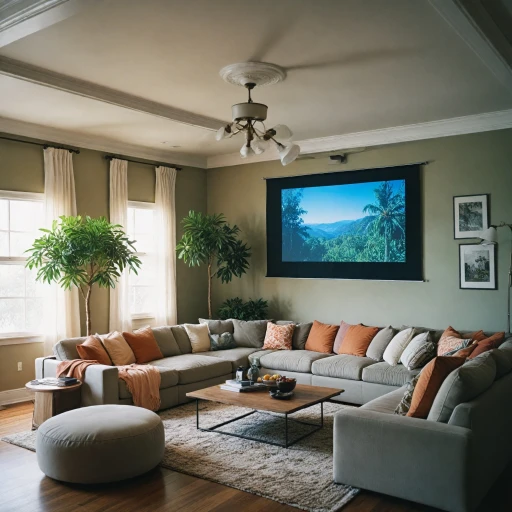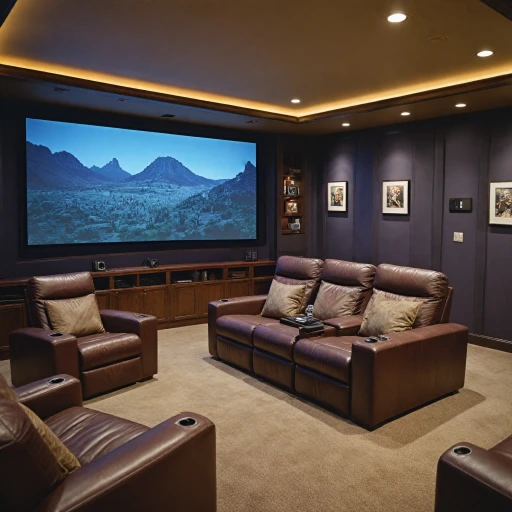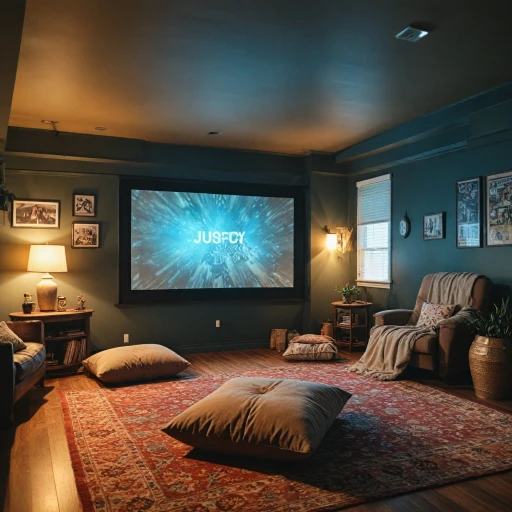
Understanding Aspect Ratios
Mastering the Art of Aspect Ratios
Understanding aspect ratios is pivotal for selecting the best projector screen for your home theater. The aspect ratio denotes the proportional relationship between the projection's width and height. Common in both home and professional theaters, aspect ratios such as 16:9 or 4:3 determine the frame in which your image comes to life. Why does this matter? The ratio you choose impacts the image quality, as well as how much of your projector's resolution is used effectively. A 16:9 aspect ratio is often preferred for home theaters, aligning with many modern films and television broadcasts. This aspect complements short throw projectors and ultra short throw projectors that grace modern rooms. In contrast, a 4:3 ratio may suit older content or presentations. Additionally, the screen material and frame can influence the perceived quality of your projection. Fixed frame screens offered by brands like Elite Screens are crafted to maintain a flat, tensioned surface—ensuring crisp projection and maintaining the chosen aspect ratio. For a seamless viewing experience, it’s crucial to consider both the projector’s capabilities and the space where you plan to install it. Optimizing these variables ensures that your projector screen size aligns with the distance and ambient light conditions of your room, contributing to the overall projection quality and viewing experience. For those interested in maintaining their projection screen in pristine condition, you might find value in these effective tips for cleaning your projector screen.Room Dimensions and Viewing Distance
Evaluating the Space for Optimal Viewing
Ensuring the best fit for your projector screen involves careful consideration of your room dimensions and the viewing distance. These factors significantly influence the overall viewing experience in your home theater setup. Understanding how these elements interplay can enhance the quality of the projected image and make a significant difference.
To start, measure the length, width, and height of your room. This will dictate the maximum projector screen size that fits well without overwhelming the space. A good rule of thumb is to maintain a distance between the screen and the seating equal to approximately 1.5 to 2.5 times the diagonal size of the screen. This ensures that viewers can enjoy the screen's image quality without straining their eyes.
The projector type also plays a critical role here. For instance, short throw or ultra short throw projectors allow you to project a large image from a small distance, which is ideal for smaller rooms. Conversely, if you have a larger space, traditional longer throw distance projectors are suitable, enabling you to achieve larger screen sizes without compromising image clarity.
It’s equally important to consider screen height relative to seating arrangements. Ideally, the top of the screen should be at or just below the viewer’s eye level to maintain comfort over prolonged viewing periods.
Additionally, thinking about ambient light sources in the room can influence the choice between fixed frame screens or retractable options. Fixed frame screens provide a smooth, tensioned surface which is typically better for picture quality, but might not be as adaptable to room changes as retractable ones.
For those looking to keep their gear in top shape, one should be aware of the importance of effective maintenance practices. Maintaining a clean screen ensures that your images remain sharp and vibrant, capitalizing on your room's setup for the best viewing experience.
Screen Size and Resolution Compatibility
Aligning Screen Size with Resolution for Optimal Clarity
When setting up a home theater, one often focuses on the projector's resolution to maintain the image quality. The screen size must complement the resolution for achieving the best viewing experience. Mismatched screen sizes and resolutions can lead to subpar visual output, affecting the theater's impact.
Projectors come with various native resolutions like 1080p or 4K. A full HD projector requires careful consideration when selecting the screen size. Typically, a 100-to-120-inch diagonal screen is ideal for 1080p projectors, ensuring the pixels render adequately, providing viewers with clarity and detail. On the other hand, 4K projectors offer higher resolution, allowing larger screens without losing picture quality.
The concept of aspect ratios plays into this too. A 16:9 aspect is standard for modern projectors, compatible with a wide range of content. The aspect ratios and screen size should synergize—maintaining vivid projections without compromising the viewing distance and image clarity.
Frame screen and screen material are crucial in achieving the desired resolution compatibility. A fixed frame composed of quality materials maximizes the resolution potential, enhancing the projection’s visual fidelity. Higher quality screens ensure no light is lost during projection, rendering impeccable image detail and color accuracy.
Selecting the right screen size also involves understanding the throw of your projector. A short throw projector may necessitate smaller screen sizes unless managed in a larger room, paving the way for ultra-short throw projectors to maintain larger screen vistas in constrained spaces.
When in doubt about configuration, consulting guides on choosing optimal HDMI cables can complement efforts in achieving superior screen sizes and resolution compatibility.
Impact of Ambient Light
Influence of Brightness on Viewing Experience
Ambient light significantly influences the quality of your projection and ultimately affects your home theater experience. When selecting the best projector screen for your setup, it is important to consider how light interacts with the screen and influences the projected image. Ambient light can wash out colors and reduce contrast, diminishing the viewing experience. For rooms with significant natural or artificial light, a high-gain screen or an ambient light-rejecting (ALR) screen may be beneficial. These types of screens are designed to maintain image quality even in brighter environments. A room with controlled lighting—such as blackout blinds or curtains—allows for more flexibility in choosing screen material. In such cases, a standard white matte screen might provide excellent image quality without the need for specialized materials. The positioning of your projection equipment in relation to light sources is also crucial. Short throw projectors and ultra-short throw projectors require consideration of direct light exposure due to their placement closer to the screen. This ensures that the throw distance does not interfere with light beams, maintaining a clear and vivid image on the projector screen. Ultimately, balancing screen size, aspect ratio, and ambient light conditions will lead to an optimal viewing distance and a superior cinematic experience. Pairing the right screen material with your room's lighting conditions is essential to achieve those deep blacks and vibrant colors that make home theater projection so enjoyable.Fixed vs. Retractable Screens
The Benefits of Fixed and Retractable Screens
In the quest for an optimal viewing experience in your home theater setup, the choice between fixed frame and retractable projection screens can significantly impact your projector screen's functionality and overall image quality. With a variety of screen sizes and materials available, understanding which type of screen best fits your needs is crucial. A fixed frame screen is often mounted professionally, offering a sleek and polished look. This type of screen provides a tensioned, flat surface that enhances image sharpness and clarity. Its static nature means it's always ready for action, eliminating the need to set up the screen each time you want to enjoy a movie. However, it requires a dedicated room or wall space, making it a permanent part of your theater. On the other hand, retractable projector screens, which can be manually or electronically operated, offer flexibility and adaptability. They are a superb option if your room must serve multiple functions, as they can be rolled up when not in use. Though they might not offer the same level of image quality as their fixed counterparts, retractable screens are perfect for smaller homes or multi-purpose rooms. Consider the throw distance and screen height to ensure the most immersive viewing experience. Pairing them with short throw projectors can help achieve high-quality results without sacrificing space. Both screen types interact with ambient light and aspect ratios differently. It's wise to consider the ambient light in your theater room and choose a screen material that enhances image brightness and contrast, supporting your projector's native aspect ratio. For those considering ultra short throw projectors, a fixed frame may be preferable to avoid variations in image quality due to screen movement. Ultimately, whether to choose a fixed or a retractable screen will hinge on personal preferences, room dimensions, and intended use of the projector screen. Ensuring that the screen size is compatible with your room dimensions and viewing distance can greatly enhance your home theater experience.Budget Considerations
Balancing Cost and Quality
When it comes to setting up your home theater, budget considerations play a crucial role. The cost of a projector screen can vary significantly based on several factors, including size, material, and type. While it's tempting to go for the largest screen size available, it's important to consider how it fits within your budget and the overall setup of your room.
Investing in a high-quality screen material can enhance the image quality, especially if you have a high-resolution projector. However, if your budget is tight, you might need to compromise on certain features. For instance, a fixed frame screen might offer better stability and image quality compared to a retractable one, but it could be more expensive.
Cost-Effective Options
- Fixed Frame vs. Retractable: Fixed frame screens are generally more affordable and provide a better viewing experience due to their tensioned surface. However, if space is a concern, retractable screens might be worth the extra cost.
- Screen Material: The material of the screen affects the projection quality. Matte white screens are often the most budget-friendly and offer good performance in controlled lighting conditions.
- Aspect Ratio and Size: Consider the aspect ratio and size that best fits your room dimensions and viewing distance. A screen that is too large for your room can lead to a poor viewing experience, while a screen that is too small might not justify the investment in a high-quality projector.
Ultimately, the best approach is to balance your budget with the features that will enhance your viewing experience the most. Remember, the right projector screen can significantly impact the overall quality of your home theater setup.
